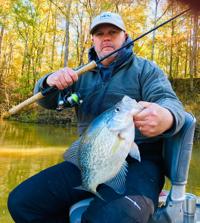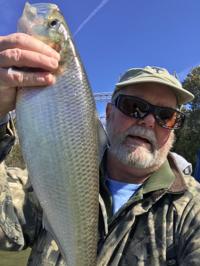Earlier this week I was home debating my options. It was rainy, cold and windy. A fishing trip didn't seem like a good idea. Thinking about how much rain we've had, I thought maybe it was time to start building that ark. But the price of lumber has skyrocketed. So I finally got around to doing something I had put off for a long time. I took South Carolina's online boater education course and earned my Boater Education Certificate.
You don't have to take an approved boater education course to operate a boat in South Carolina unless you are under 16 years of age and want to operate, without supervision, a personal watercraft (jet ski) or a boat powered by a 15-horsepower motor or more. I'm way past that age requirement and I've operated a boat without incident for decades. At one point I held a U.S. Coast Guard six-passenger license before letting it expire.
I didn't need to take the class but I thought it would be a good refresher. The preferred method for boater education classes is in-person, many of which are free. But the online version fit my schedule better. I visited the S.C. Department of Natural Resources website (dnr.sc.gov/education/boated.html), signed up for the online version ($34.95 plus $5 for permanent S.C. Boater Education cards) and immersed myself for several hours in boater education.
The class is divided into six units, and at the end of each unit you take a brief, multiple choice quiz.
The first unit started out with "Parts of a Boat." Bow. Stern. Gunnel. Cleat. Lights. Freeboard. Elementary stuff that if you don't know you shouldn't be operating a boat anyway. You quickly learn about port, which is the left side of the boat, and starboard, the right side.
You advance into the differences between displacement hulls (sailing vessels) and planing hulls (power boats and personal watercraft). You learn that personal watercraft are subject to the same laws and requirements of any other vessel, plus a few laws specific to PWCs. Next came sailboats and, since I don't sail, there were a few sailing terms I didn't recognize.
I learned how a boat's capacity is determined — boat length times boat width divided by 15.
Float plans and their necessity are explained, and you can download a float plan for extended outings. At a minimum, you should let a responsible person know when you are leaving, where you are going and when you plan to return. Give this person a phone number to contact local authorities if you don't return as expected. Contact this person when you return or if you decide to extend your time on the water.
The proper way to fuel a boat is explained as well as trailering tips. Novice boaters should practice towing, especially backing up, in an open field or parking lot before their initial launch and retrieval. Courtesy at the boat ramp also is detailed.
There is a section on knots, and we're not talking nautical miles per hour. You learn how to tie a figure eight, a bowline, an anchor bend and a clove hitch as well as the proper way to tie off a boat cleat.
You build on what you have learned as you progress through the class. Boaters have three major responsibilities — practice good seamanship; keep a proper lookout; and maintain a safe speed.
I discovered I wasn't up on some terminology, such as the give-way vessel and the stand-on vessel. The give-way vessel is required to take early and substantial action to keep well away from other vessels by stopping, slowing down, or changing course. Avoid crossing in front of other vessels. Any change of course and/or speed should be large enough to be readily apparent to another vessel. (A series of small changes should be avoided.) The stand-on vessel must maintain its course and speed unless it becomes apparent that the give-way vessel is not taking appropriate action. If you must take action, do not turn toward the give-way vessel or cross in front of it.
Unit 3 introduces you to aids to navigation and the meanings of the red nun buoy, the green can, the red triangle daymarks and the daymarks with green squares. Red right returning from sea means to keep the red markers to your boat's right (starboard side) when you are operating your boat.
As you continue through the class, boaters are taught about the effects of alcohol, accidents and how to prevent them and the importance of not only carrying the proper personal flotation devices (PFDs), but also the importance of wearing them. Fire extinguishers are explained, hypothermia, first aid and weather. The instructional part of the class ends with Sharing the Fun of Your Boat.
In order to receive the Boater Education Certificate, you are required to successfully complete a 60-question quiz. You can take a 60-question practice quiz before taking the real thing. I'm happy to report I passed with a score of 96 percent. I feel like I already knew most of the material in the course. South Carolina already is one of the top states in the country based upon the number of boaters and those numbers continue to climb. For those who are just getting into boating, do yourself a favor and take this or one of the many other approved Boater Education Classes before hitting the water. And these rainy and cold winter days are a good time to take the course before it's time to actually get out and enjoy our state's waters.
"course" - Google News
February 21, 2021 at 02:00AM
https://ift.tt/3k8SRMn
SC striving to make waterways safer with boater education course - Charleston Post Courier
"course" - Google News
https://ift.tt/35q9ps5
https://ift.tt/35rCFi1
Bagikan Berita Ini
















0 Response to "SC striving to make waterways safer with boater education course - Charleston Post Courier"
Post a Comment